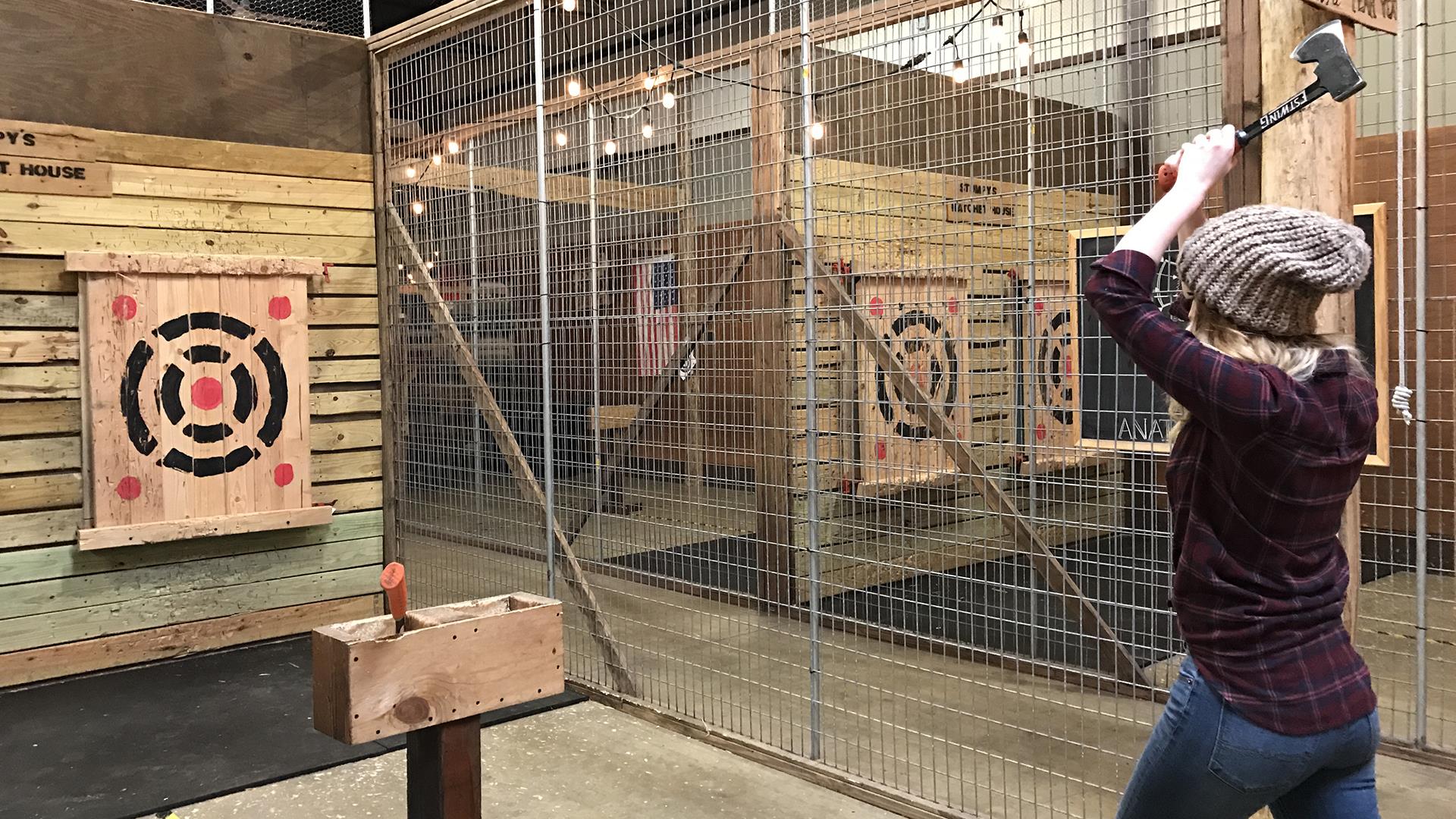Axe Throwing Denver: Experience the Best of Indoor Leisure
Axe Throwing Denver: Experience the Best of Indoor Leisure
Blog Article
The Enjoyable of Axe Throwing: Just How This Sporting Activity Incorporates Ability and Adrenaline for a Good Time
Axe throwing has actually arised as an astounding sporting activity that masterfully intertwines the demand for accurate skill with the thrill of adrenaline, offering individuals a one-of-a-kind and appealing experience. The act of hurling an axe towards a target requires focus and technique, simultaneously cultivating an atmosphere of sociability and pleasant rivalry.
The Beginnings of Axe Throwing
Axe tossing, a leisure task that has gained significant popularity in current years, traces its origins back to ancient times. The earliest records of axe use in affordable contexts are located among the Celts and Vikings, who threw axes for sporting activity as well as in combat training.
Medieval European warriors, especially during the Center Ages, practiced axe tossing as component of their martial training. The Francisca, a kind of tossing axe used by the Franks, ended up being iconic for its deadly precision. This conventional weapon was created to be tossed at enemy shields and shield, showcasing its double utility in both sport and fight.
In even more recent history, axe throwing saw a revival in the logging camps of North America in the 20th and 19th centuries. Lumberjacks would certainly engage in pleasant competitors, evaluating their precision and strength by focusing on wooden targets. This development from a survival skill to a leisure task has actually paved the way for its modern renewal, with specialized places and leagues currently celebrating the sporting activity around the world.
Devices You Need
Recognizing the rich background of axe throwing boosts the admiration of the sport's contemporary version. For leisure and competitive axe throwing, the most frequently utilized kind is the hatchet, normally evaluating between 1.25 to 2 extra pounds with a take care of length of around 16 inches.
Similarly important is the target. Regulation targets are built from wood, with softwood selections like yearn or cottonwood being liked for their capability to hold the axe and take in. The target is normally split right into five concentric circles, each with a particular factor value, to help with scoring.
Safety and security gear, though commonly overlooked, is essential. Safety gloves can boost hold and protect against sores, while closed-toed shoes are a should to protect feet from dropped axes (denver axe throwing). A well-lit, spacious throwing area, full with safety obstacles, makes sure a regulated atmosphere where participants can focus on honing their skills.
Basic Techniques Discussed
Grasping the essential techniques of axe throwing is crucial for both safety and proficiency. The very first technique to recognize is the grasp. Hold the axe with a company, yet loosened up hold, akin to holding a golf club. The leading hand must be placed straight listed below the axe head, while the non-dominant hand supports completion of the manage.
Following, concentrate on the stance. Stand with your feet shoulder-width apart, ensuring your body is balanced. Your leading foot ought to be a little onward, lining up with your target. This positioning help in preserving stability and routing power properly in the direction of the target.

Safety And Security First
Making certain safety and security in axe throwing is vital to creating an injury-free and satisfying experience. A properly designed axe tossing center attributes clear demarcations between throwing lanes, durable backgrounds to catch stray axes, and non-slip floor covering to avoid accidents.
Benefits of Axe Throwing
Axe tossing offers a myriad of advantages that prolong past basic recreation. The recurring movement of tossing the axe also improves hand-eye sychronisation and fine electric motor abilities.
Emotionally, axe tossing calls for emphasis, precision, and approach, making it an exceptional means to develop cognitive skills. The concentration required to strike the target can serve as a type of mindfulness, allowing participants to remove their minds and minimize anxiety. This mental interaction can be specifically beneficial in aiding individuals develop better problem-solving skills and mental resilience.
Socially, axe throwing is typically enjoyed in group settings, cultivating team-building and friendship. Whether as component of a business occasion or a casual getaway with pals, the sporting activity urges communication and collaboration. Additionally, the common experience of finding out and enhancing with each other can strengthen connections and create long lasting memories.
Conclusion

The earliest records of axe use in affordable contexts are discovered amongst the Celts and Vikings, that tossed axes for sport as well as in fight training. Release the axe when your hands are about at eye level, permitting the axe's all-natural turning to lead it towards his explanation the target.
A properly designed axe throwing facility functions clear demarcations between tossing lanes, tough backdrops to official statement catch roaming axes, and non-slip flooring to protect against mishaps. Individuals should be advised on the right method to toss the axe and take care of, stressing managed, intentional movements over strong throws.
In recap, axe tossing stands out as a sport that masterfully integrates skill, adrenaline, and precision.
Report this page